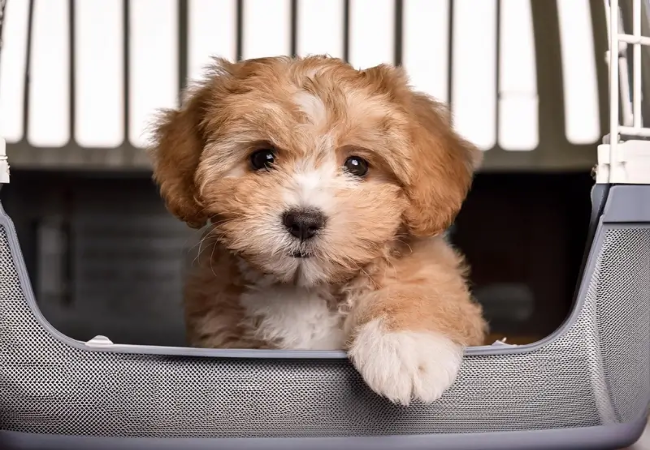Puppy Crying in Crate (2025): Vet-Approved Calming & Training 🐶💤

In this article
Puppy Crying in Crate (2025): Vet-Approved Calming & Training 🐶💤
By Dr. Duncan Houston BVSc
📌 Why Puppies Cry in Their Crate
Puppies cry in crates because they’re confused, scared, lonely, or need to pee—having just left littermates and a cozy den. It’s their way of calling for comfort.
- 🔸 Separation distress: missing family or litter companions
- 🔸 Fear and confusion: new environment and limited space
- 🔸 Attention-seeking or frustration
- 🔸 Physical needs: bathroom breaks, hunger, or discomfort
- 🔸 Health issues: pain, hunger, illness must be ruled out
✅ Crate Training Is a Process, Not a Punishment
Think of the crate as a "den"—a safe space—NOT confinement punishment. Done properly, it becomes a home base for calm rest, not stress.
🛠 Step-by-Step Crate Training Method
- Introduce Gradually: Leave the door open, feed treats and meals inside—build positive association.
- Short Sessions: Start with a few minutes in presence, gradually increase time.
- Comfort First Night: Keep crate near your bed; touch through bars; use wearable warmth or heartbeat toy.
- Timely Potty Breaks: Puppies need bathroom access—avoid crate until they can hold bladder (age in months +1 = hours).
- Ignore vs Comfort: Let them cry 1–2 mins; if continues, gently reassure—don’t open door on first cry.
- Positive Reinforcement: Reward calm settling—not crying—then increase separation time gradually.
🧩 Enrichment & Comfort Aids
- Add a scented T-shirt, soft beds, or nature-based pheromone diffuser.
- Crate-friendly chew toys or frozen Kong with treats—loader in for distraction.
- Cover with a blanket to create a den-like, calm retreat.
- Play calming music or white noise during nap times.
🏃 Support Behavioral Transition
- Provide sufficient exercise and mental play—like fetch, tug, interactive feeding—before crate time.
- Rewards for calm, quiet behavior—avoid attention for whining.
- Feed meals inside to build positive relation with crate.
- Shorten solo sessions gradually instead of full night separation too fast.
🔔 Monitoring & When to Seek Help
If crying is intense, prolonged, or you suspect distress beyond adjustment—troubleshoot:
- Check health—ensure not hurt or ill.
- Ensure no reinforcement of crying behaviors.
- Seek help from certified trainers or veterinary behaviorist if anxiety persists.
📊 Typical Timeline
- Few days – 2 weeks: Night crying usually fades with routine.
- Several weeks: Daytime crate tolerance for short naps without fuss.
- Couple months: Consolidated sleep overnight, crate is a positive den.
🌟 Dr Houston’s Crate Success Checklist
- ✅ Age-appropriate bladder breaks
- ✅ Crate near your sleeping area initially
- ✅ Use scent, comfort aids, and crate meals
- ✅ Gentle reassurance, then reward calm behavior
- ✅ Gradual increase of crate alone time
- ✅ Exercise and mental enrichment before crate
- ✅ Professional help for severe anxiety
🎬 Real-Life Insights—from Reddit Users
> “When the puppy cries, stick your fingers through the bars and give them some touch… Eventually you can move the crate farther and farther away.”
> “Feed her frozen kongs for meals in the crate... She’d then promptly fall sound asleep. And no crying at all.”
🌟 Final Thoughts
Crate training patience pays off. With time, empathy, and structured progression, your puppy will learn that their crate is a safe, cozy haven—not a source of fear. Let them cry for a short moment, assist when they need reassurance, and always reward calm behavior. Soon, peaceful crate time is possible each day—and night. 💤❤️
Need help building a tailored crate-training plan or behavior support? Visit AskAVet.com or download the Ask A Vet app—your trusted partner for puppy success. 📱🐶






